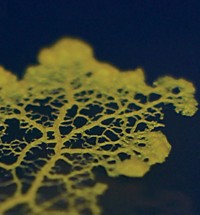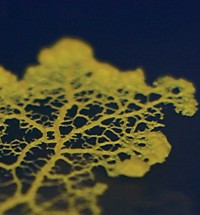Advertisement
Grab your lab coat. Let's get started
Welcome!
Welcome!
Create an account below to get 6 C&EN articles per month, receive newsletters and more - all free.
It seems this is your first time logging in online. Please enter the following information to continue.
As an ACS member you automatically get access to this site. All we need is few more details to create your reading experience.
Not you? Sign in with a different account.
Not you? Sign in with a different account.
ERROR 1
ERROR 1
ERROR 2
ERROR 2
ERROR 2
ERROR 2
ERROR 2
Password and Confirm password must match.
If you have an ACS member number, please enter it here so we can link this account to your membership. (optional)
ERROR 2
ACS values your privacy. By submitting your information, you are gaining access to C&EN and subscribing to our weekly newsletter. We use the information you provide to make your reading experience better, and we will never sell your data to third party members.
Materials
Building A Jellyfish
Biomimetics: Researchers use polymer sheet, protein, and heart cells to replicate the swim stroke of the marine animal
by Lauren K. Wolf
July 25, 2012
The list of creatures that have inspired scientists to build synthetic, or biomimetic, devices just got longer, according to a report in Nature Biotechnology (DOI: 10.1038/nbt.2269).
John O. Dabiri of Caltech, Kevin Kit Parker of Harvard University, and coworkers have engineered a thin, eight-armed polymeric sheet to swim like a jellyfish. To accomplish the feat, the team mapped the pumping motions of a juvenile jellyfish while it was swimming. Then the researchers used the collected information to build a mimic from three simple components, says Janna C. Nawroth, a graduate student at Caltech and lead author of the report.
The first of these parts is a spin-coated 22-µm-thick polydimethylsiloxane film. Onto that layer, the team printed the protein fibronectin in a pattern simulating jellyfish muscle-fiber alignment. Finally, the researchers seeded rat heart cells onto the structure and incubated them until they formed electrically conductive tissue.

The resulting mimic, called a medusoid, swims like a jellyfish when exposed to a pulsed electrical field. Aside from being a model system to inspire the development of future tissue-engineered pumping organs, Nawroth says, these medusoids might eventually be used to test drugs for cardiac disease.
“This is a brilliant study and is impressive in its ingenuity, the smart and clear design, and the scrutiny of mathematical, physical and biochemical methods applied,” says Klaus von der Mark, an expert in regenerative medicine at Germany’s University of Erlangen-Nürnburg. The bioinspired approach the team used to engineer such microdevices capable of propelling through fluids, he adds, “may have enormous potential in medicine, pharmacology, microengineering, and other fields.”





Join the conversation
Contact the reporter
Submit a Letter to the Editor for publication
Engage with us on Twitter